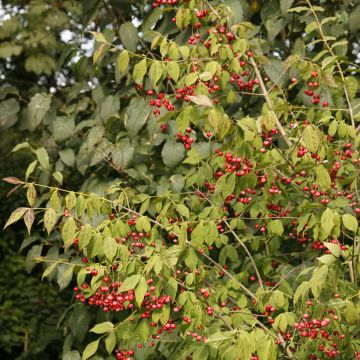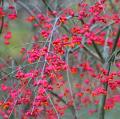Autumn-coloured Spindle
Would this plant suit my garden? Set up your Plantfit profile →
Available in 4 sizes
Available in 2 sizes
Available in 4 sizes
Available in 1 sizes
Available in 3 sizes
Available in 1 sizes
Available in 2 sizes
Available in 2 sizes
Available in 1 sizes
Available in 1 sizes
Available in 1 sizes
Available in 1 sizes
Available in 1 sizes
Available in 1 sizes
Available in 1 sizes
Spindle plants, in Latin Euonymus, belong to the botanical family of Celastraceae. Among them we find deciduous bushes offering remarkable autumn colours. In particular Euonymus alatus, the winged spindle tree, and E. europaeus, the European spindle tree. Their foliage, which flames bright in autumn, and their brightly coloured fruits make them interesting shrubs for many gardens.
Euonymus alatus is acclaimed for its foliage that turns to flamboyant shades of pink and red in autumn. Adapted to various types of soil, it is resistant to diseases. Euonymus europaeus is appreciated for its leaves that turn red and orange in autumn. It is often used to form hedges and borders due to its great adaptability and disease resistance. Euonymus hamiltonianus produces small green flowers in summer and superb pink fruits in autumn. Its deciduous foliage can also give out a beautiful range of autumn colours, from yellow to red. Let us also mention Euonymus planipes, which is characterised by its reddish flat fruits and foliage that turns reddish-orange in autumn, adding another colourful dimension to any landscaping. Discover the most beautiful varieties in the links below.
To ensure optimal growth of deciduous spindles, well-drained soil is essential. These bushes thrive in full sun or partial shade, and they tolerate drought once established. A simple pruning in early spring is sufficient to stimulate new growth and maintain a pleasant silhouette.
Haven't found what you were looking for?



















































